#But it's a fun idea to be able to send someone a python script they can use to fuck us (literally)
Explore tagged Tumblr posts
Text
willing to bet it's an attempt to incentivise users to stay with the official app, instead of using some of the open source teledildonics frameworks that exist?
why does my butt plug have dailies
#One of our planned projects for post-surgery is a secure peer to peer to control system for friend groups to link into xD#Like the API's and libraries exist already#And we want an excuse to get some experience with networking security and gui design#Granted the expected user count will be 1 (us)#But it's a fun idea to be able to send someone a python script they can use to fuck us (literally)
16K notes
·
View notes
Photo

Terry Jones obituary
One morning Brian Cohen, completely naked, flung open the shutters at his bedroom window to find a mob below hailing him as the Messiah. Mrs Cohen, played by Terry Jones, who has died aged 77, had something to say about that. “He’s not the Messiah. He’s a very naughty boy,” she told the disappointed crowd. It became a classic cinema moment.
The 1979 film Monty Python’s Life of Brian, a satire about an ordinary Jewish boy mistaken for the Messiah, which Jones directed and co-wrote with his fellow Pythons Graham Chapman, John Cleese, Terry Gilliam, Eric Idle and Michael Palin, was banned by 39 British local authorities, and by Ireland and Norway. Jones and his chums were unrepentant: they even launched a Swedish poster campaign with the slogan: “So funny it was banned in Norway.”
As for Jones’s performance as Mandy Cohen, it united two leading facets of the funnyman’s repertoire: his fondness for female impersonation, and his passion for historical revisionism. The latter was evident not just in his work for Monty Python – in which his historian’s sensibility proved essential to the satire of Arthurian England in Monty Python and the Holy Grail (1975), which he co-directed and co-wrote – but also in several documentaries and books in which he stood up for what he took to be the misrepresented Middle Ages.
“We think of medieval England as being a place of unbelievable cruelty and darkness and superstition,” he said. “We think of it as all being about fair maidens in castles, and witch-burning, and a belief that the world was flat. Yet all these things are wrong.”
Arguably, without Jones, Monty Python’s Flying Circus (1969-74) would not have revolutionised British TV comedy. He was key in developing the show’s distinctively trippy, stream-of-consciousness format, where each surreal set-up (the Lumberjack Song, the upper-class twit of the year show, the dead parrot, or the fish-slapping dance) flowed into the next, unpunctuated by punchlines.
For all his directorial flair, though, Jones may well be best remembered for creating such characters as Arthur “Two Sheds” Jackson, Cardinal Biggles of the Spanish Inquisition, the Scottish poet Ewan McTeagle and the monstrous musician rodent beater in the mouse organ sketch who hits specially tuned mice with mallets.
Thanks to the show’s success, Jones was able to diversify into working as a writer, poet, librettist, film director, comedian, actor and historian. “I’ve been very lucky to have been able to act, write and direct and not have to choose just the one thing,” he said.
Jones was a second world war baby, born in Colwyn Bay, north Wales, and brought up by his mother, Dilys (nee Newnes), and grandmother, while his father, Alick Jones, was stationed with the RAF in India. He recalled meeting his father for the first time when he returned from war service: “Through plumes of steam at the end of the platform, he appeared – this lone figure in a forage cap and holding a kit bag. He ran over and kissed my mum, then my brother, then bent down and picked me up and planted one right on me. I’d only ever been kissed by the smooth lips of a lady up until that point, so his bristly moustache was quite disturbing.”
When he was four, the family moved to Surrey so his father could take up an appointment as a bank clerk. Terry attended primary school in Esher and the Royal Grammar school in Guildford. He studied English at St Edmund Hall, Oxford, and developed a lifelong interest in medieval history as a result of reading Chaucer.
At Oxford, he started the Experimental Theatre Company with his friend and contemporary Michael Rudman, performing everything from Brecht to cabaret. He also met Palin and the historian Robert Hewson, and collaborated with them on a satire on the death penalty called Hang Down Your Head and Die. It was set in a circus ring, with Jones playing the condemned man. He and Palin then worked together on the Oxford Revue, a satirical sketch show they performed at the 1964 Edinburgh festival, where he met David Frost as well as Chapman, Idle and Cleese.
After graduation, he was hired as a copywriter for Anglia Television and then taken on as a script editor at the BBC, where he worked as joke writer for BBC2’s Late Night Line-Up (1964-72). Jones and Palin became fixtures on the booming TV satire scene, writing for, among other BBC shows, The Frost Report (1966-67) and The Kathy Kirby Show (1964), as well as the ITV comedy sketch series Do Not Adjust Your Set (1967-69).
In 1967, he and Palin were invited to write and perform for Twice a Fortnight, a BBC sketch show that provided a training ground not only for a third of the Pythons (Jones and Palin), but two-thirds of the Goodies (Graeme Garden and Bill Oddie) and the co-creator of the 1980s political sitcom Yes Minister, Jonathan Lynn.
Jones and Palin wrote and starred in The Complete and Utter History of Britain (1969) for LWT. Its conceit was to relate historical incidents as if TV had existed at the time. In one sketch, Samuel Pepys was a chat show host; in another, a young couple of ancient Britons looking for their first home were shown around the brand-new Stonehenge. “It’s got character, charm – and a slab in the middle,” said the estate agent.
In the same year, he became one of the six founders of Monty Python’s Flying Circus. They expected the show to be quickly decommissioned by BBC bosses. “Every episode we’d be there biting our nails hoping someone might find it funny. Right up until the middle of the second series John Cleese’s mum was still sending him job adverts for supermarket managers cut out from her local newspaper,” Jones recalled. “It was only when they started receiving sackfuls of correspondence from school kids saying they loved it that we knew we were saved.”
After Python finished its run on TV, Jones went on to direct several films with the troupe. The first, Monty Python and the Holy Grail, was, he recalled, “a disaster when we first showed it. The audiences would laugh for the first five minutes and then silence, nothing. So we re-cut it. Then we’d show it in different cities, saying, ‘We’re worried about our film, would you come and look at it?’ And as a result people would come and they’d all be terribly worried about it too, so it was a nightmare.”
He had more fun co-writing and directing two series for the BBC called Ripping Yarns (1976-79) in which Palin starred as a series of heroic characters in mock-adventure stories, among them Across the Andes by Frog, and Roger of the Raj, sending up interwar literature aimed at schoolboys.
Jones directed and starred in Monty Python’s Life of Brian, which some religious groups denounced for supposedly mocking Christianity. Jones defended the film: “It wasn’t about what Christ was saying, but about the people who followed him – the ones who for the next 2,000 years would torture and kill each other because they couldn’t agree on what he was saying about peace and love.”
In 1983 he directed Monty Python’s The Meaning of Life, in which he made, perhaps, his most disgusting appearance, as Mr Creosote, a ludicrously obese diner, who is served dishes while vomiting repeatedly.
During this decade Jones diversified, proving there was life after Python. In 1980, he published Chaucer’s Knight: The Portrait of a Medieval Mercenary, arguing that the supposed paragon of Christian virtue could be demonstrated to be, if one studied the battles Chaucer claimed he was involved in, a typical, perhaps even vicious, mercenary. He also set out to overturn the idea of Richard II presented in the work of Shakespeare “who paints him more like sort of a weak … unmanly character”. Jones portrayed the king as a victim of spin: “There’s a possibility that Richard was actually a popular king,” he said.
He wrote children’s books, starting with The Saga of Erik the Viking (1983), which he composed originally for his son, Bill. A book of rhymes, The Curse of the Vampire’s Socks (1989), featured such characters as the Sewer Kangaroo and Moby Duck.
In 1987, he directed Personal Services, a film about the madam of a suburban brothel catering for older men, starring Julie Walters. The story was inspired by the experiences of the Streatham brothel-keeper Cynthia Payne. Jones proudly related that three of four films banned in Ireland were directed by him – The Life of Brian, The Meaning of Life and Personal Services.
Two years later, he directed Erik the Viking, a film adaptation of his book, with Tim Robbins in the title role of a young Norseman who declines to go into the family line of raping and pillaging. In 1996, he adapted Kenneth Grahame’s Wind in the Willows for the big screen, giving himself the role of Mr Toad, with Ratty and Mole played by Idle and Steve Coogan. But it was rarely screened in cinemas. “It was ruined by studio politicking between Disney and Columbia Tristar,” he said. “We made a really nice film but no one saw it. It didn’t make any money, even though it was well reviewed.”
Jones was also unfortunate with his next film project. Absolutely Anything, based on a script he wrote with the screenwriter Gavin Scott, concerned aliens coming to Earth and giving one person absolute power. Plans were scuppered when a movie with a similar premise, Bruce Almighty, starring Jim Carrey, was released in 2003. Only in 2015 did Jones manage to film Absolutely Anything, in which Simon Pegg, playing a mild-mannered schoolteacher, is given miraculous powers by a council of CGI aliens voiced by Jones and his former Monty Python colleagues. Robin Williams, in one of his last roles, voiced Pegg’s dog.
Jones made well-received history documentaries, including in 2002 The Hidden History of Egypt, The Hidden History of Rome and The Hidden History of Sex & Love, in which he examined the diets, hygiene, careers, sex lives and domestic arrangements of the ancient world, often appearing in the films as an ancient character, sometimes dressed as a woman.
In his book Who Murdered Chaucer? (2003), he wondered if the poet had been killed on behalf of King Henry IV for being politically troublesome.
He wrote for the Guardian, about the poll tax, nuclear power and the ozone layer. He became a vocal opponent of the Iraq war, and his articles on the subject were collected under the title Terry Jones’s War on the War on Terror (2004).
In his 2006 BBC series Barbarians, Jones sought to show that supposedly primitive Celts and savage Goths were nothing of the kind and that the ancient Greeks and Persians were neither as ineffectual nor as effete as the ancient Romans supposed. Best of all, he sought to demonstrate that it was not the Vandals and other north European tribes who destroyed Rome but Rome itself, thanks to the loss of its African tax base.
When Jones was asked what he would like on his tombstone, he did not want to be remembered as a Python, perhaps surprisingly, but for his writing and historical work. “Maybe a description of me as a writer of children’s books or maybe as the man who restored Richard II’s reputation. I think those are my best bits.”
In 2016, it was announced that Jones had been diagnosed with primary progressive aphasia, a form of dementia that impairs the ability to communicate. He and his family and friends spoke about his experiences to help others living with the condition.
Jones is survived by his second wife, Anna (nee Söderström), whom he married in 2012, and their daughter, Siri; and by Bill and Sally, the children of his first marriage, to Alison Telfer, which ended in divorce.
• Terence Graham Parry Jones, writer, actor and director, born 1 February 1942; died 21 January 2020
Daily inspiration. Discover more photos at http://justforbooks.tumblr.com
29 notes
·
View notes
Text
Python Docx

Python Docx4j
Python Docx To Pdf
Python Docx Table
Python Docx To Pdf
Python Docx2txt
Python Docx2txt
When you ask someone to send you a contract or a report there is a high probability that you’ll get a DOCX file. Whether you like it not, it makes sense considering that 1.2 billion people use Microsoft Office although a definition of “use” is quite vague in this case. DOCX is a binary file which is, unlike XLSX, not famous for being easy to integrate into your application. PDF is much easier when you care more about how a document is displayed than its abilities for further modifications. Let’s focus on that.
Python-docx versions 0.3.0 and later are not API-compatible with prior versions. Python-docx is hosted on PyPI, so installation is relatively simple, and just depends on what installation utilities you have installed. Python-docx may be installed with pip if you have it available.
Installing Python-Docx Library Several libraries exist that can be used to read and write MS Word files in Python. However, we will be using the python-docx module owing to its ease-of-use. Execute the following pip command in your terminal to download the python-docx module as shown below.
Python has a few great libraries to work with DOCX (python-dox) and PDF files (PyPDF2, pdfrw). Those are good choices and a lot of fun to read or write files. That said, I know I'd fail miserably trying to achieve 1:1 conversion.
Release v0.8.10 (Installation)python-docx is a Python library for creating and updating Microsoft Word (.docx) files.
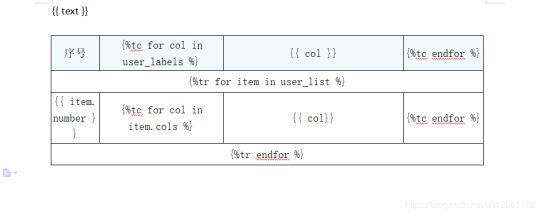
Looking further I came across unoconv. Universal Office Converter is a library that’s converting any document format supported by LibreOffice/OpenOffice. That sound like a solid solution for my use case where I care more about quality than anything else. As execution time isn't my problem I have been only concerned whether it’s possible to run LibreOffice without X display. Apparently, LibreOffice can be run in haedless mode and supports conversion between various formats, sweet!
I’m grateful to unoconv for an idea and great README explaining multiple problems I can come across. In the same time, I’m put off by the number of open issues and abandoned pull requests. If I get versions right, how hard can it be? Not hard at all, with few caveats though.
Testing converter
LibreOffice is available on all major platforms and has an active community. It's not active as new-hot-js-framework-active but still with plenty of good read and support. You can get your copy from the download page. Be a good user and go with up-to-date version. You can always downgrade in case of any problems and feedback on latest release is always appreciated.
On macOS and Windows executable is called soffice and libreoffice on Linux. I'm on macOS, executable soffice isn't available in my PATH after the installation but you can find it inside the LibreOffice.app. To test how LibreOffice deals with your files you can run:
In my case results were more than satisfying. The only problem I saw was a misalignment in a file when the alignment was done with spaces, sad but true. This problem was caused by missing fonts and different width of 'replacements' fonts. No worries, we'll address this problem later.
Setup I
While reading unoconv issues I've noticed that many problems are connected due to the mismatch of the versions. I'm going with Docker so I can have pretty stable setup and so I can be sure that everything works.
Let's start with defining simple Dockerfile, just with dependencies and ADD one DOCX file just for testing:
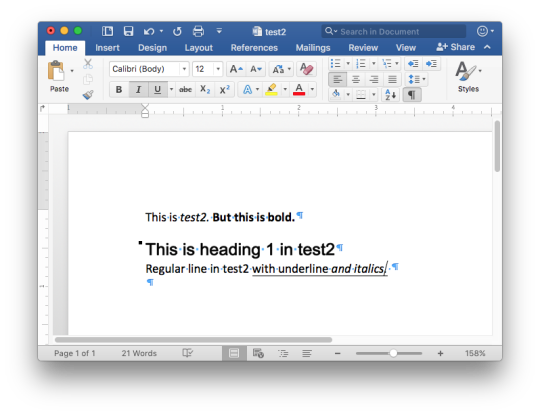
Let's build an image:
After image is created we can run the container and convert the file inside the container:
Running LibreOffice as a subprocess
We want to run LibreOffice converter as a subprocess and provide the same API for all platforms. Let's define a module which can be run as a standalone script or which we can later import on our server.
Required arguments which convert_to accepts are folder to which we save PDF and a path to the source file. Optionally we specify a timeout in seconds. I’m saying optional but consider it mandatory. We don’t want a process to hang too long in case of any problems or just to limit computation time we are able to give away to each conversion. LibreOffice executable location and name depends on the platform so edit libreoffice_exec to support platform you’re using.
subprocess.run doesn’t capture stdout and stderr by default. We can easily change the default behavior by passing subprocess.PIPE. Unfortunately, in the case of the failure, LibreOffice will fail with return code 0 and nothing will be written to stderr. I decided to look for the success message assuming that it won’t be there in case of an error and raise LibreOfficeError otherwise. This approach hasn’t failed me so far.
Uploading files with Flask
Converting using the command line is ok for testing and development but won't take us far. Let's build a simple server in Flask.
We'll need few helper function to work with files and few custom errors for handling error messages. Upload directory path is defined in config.py. You can also consider using flask-restplus or flask-restful which makes handling errors a little easier.
The server is pretty straightforward. In production, you would probably want to use some kind of authentication to limit access to uploads directory. If not, give up on serving static files with Flask and go for Nginx.
Important take-away from this example is that you want to tell your app to be threaded so one request won't prevent other routes from being served. However, WSGI server included with Flask is not production ready and focuses on development. In production, you want to use a proper server with automatic worker process management like gunicorn. Check the docs for an example how to integrate gunicorn into your app. We are going to run the application inside a container so host has to be set to publicly visible 0.0.0.0.
Setup II
Now when we have a server we can update Dockerfile. We need to copy our application source code to the image filesystem and install required dependencies.
In docker-compose.yml we want to specify ports mapping and mount a volume. If you followed the code and you tried running examples you have probably noticed that we were missing the way to tell Flask to run in a debugging mode. Defining environment variable without a value is causing that this variable is going to be passed to the container from the host system. Alternatively, you can provide different config files for different environments.
Supporting custom fonts
I've mentioned a problem with missing fonts earlier. LibreOffice can, of course, make use of custom fonts. If you can predict which fonts your user might be using there's a simple remedy. Add following line to your Dockfile.
Now when you put custom font file in the font directory in your project, rebuild the image. From now on you support custom fonts!
Summary
This should give you the idea how you can provide quality conversion of different documents to PDF. Although the main goal was to convert a DOCX file you should be fine with presentations, spreadsheets or images.
Further improvements could be providing support for multiple files, the converter can be configured to accept more than one file as well.
Photo by Samuel Zeller on Unsplash.
Did you enjoy it? Follow me@MichalZalecki on Twitter, where I share some interesting, bite-size content.
This ebook goes beyond Jest documentation to explain software testing techniques. I focus on unit test separation, mocking, matchers, patterns, and best practices.
Get it now!
Mastering Jest: Tips & Tricks | $9
Latest version
Released:
Extract content from docx files
Project description
Extract docx headers, footers, text, footnotes, endnotes, properties, and images to a Python object.
The code is an expansion/contraction of python-docx2txt (Copyright (c) 2015 Ankush Shah). The original code is mostly gone, but some of the bones may still be here.
shared features:
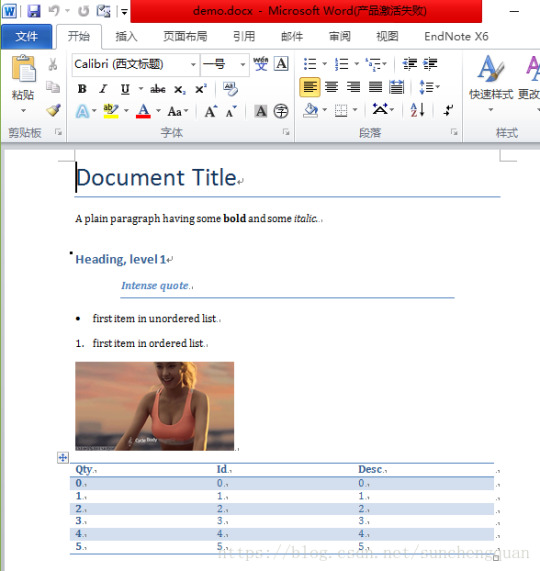
extracts text from docx files
extracts images from docx files
no dependencies (docx2python requires pytest to test)
additions:
extracts footnotes and endnotes
converts bullets and numbered lists to ascii with indentation
converts hyperlinks to <a href='http:/...'>link text</a>
retains some structure of the original file (more below)
extracts document properties (creator, lastModifiedBy, etc.)
inserts image placeholders in text ('----image1.jpg----')
inserts plain text footnote and endnote references in text ('----footnote1----')
(optionally) retains font size, font color, bold, italics, and underscore as html
extract user selections from checkboxes and dropdown menus
full test coverage and documentation for developers
subtractions:
no command-line interface
will only work with Python 3.4+
Installation
Use
Note on html feature:
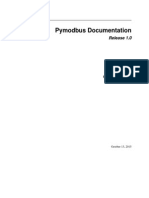
font size, font color, bold, italics, and underline supported
hyperlinks will always be exported as html (<a href='http:/...'>link text</a>), even if export_font_style=False, because I couldn't think of a more cononical representation.
every tag open in a paragraph will be closed in that paragraph (and, where appropriate, reopened in the next paragraph). If two subsequenct paragraphs are bold, they will be returned as <b>paragraph q</b>, <b>paragraph 2</b>. This is intentional to make each paragraph its own entity.
if you specify export_font_style=True, > and < in your docx text will be encoded as > and <
Return Value
Function docx2python returns an object with several attributes.
header - contents of the docx headers in the return format described herein
footer - contents of the docx footers in the return format described herein
body - contents of the docx in the return format described herein
footnotes - contents of the docx in the return format described herein
endnotes - contents of the docx in the return format described herein
document - header + body + footer (read only)
text - all docx text as one string, similar to what you'd get from python-docx2txt
properties - docx property names mapped to values (e.g., {'lastModifiedBy': 'Shay Hill'})
images - image names mapped to images in binary format. Write to filesystem with
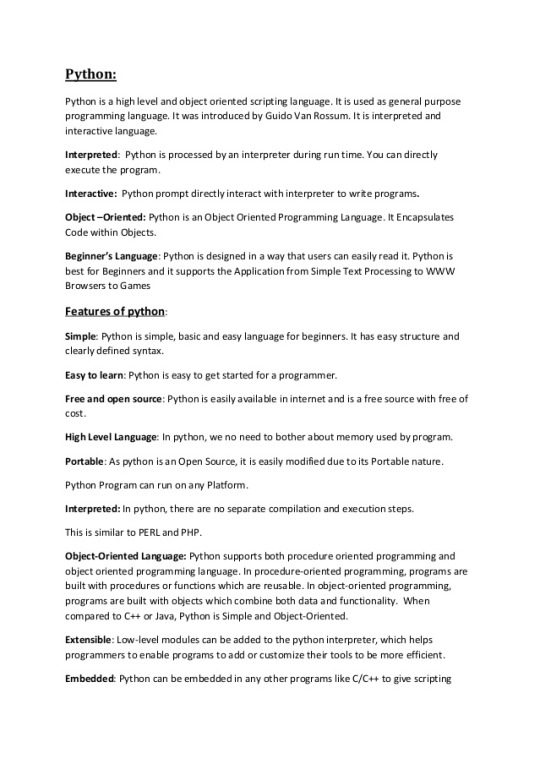
Return Format
Some structure will be maintained. Text will be returned in a nested list, with paragraphs always at depth 4 (i.e., output.body[i][j][k][l] will be a paragraph).
If your docx has no tables, output.body will appear as one a table with all contents in one cell:
Table cells will appear as table cells. Text outside tables will appear as table cells.
To preserve the even depth (text always at depth 4), nested tables will appear as new, top-level tables. This is clearer with an example:
becomes ...
This ensures text appears
only once
in the order it appears in the docx
always at depth four (i.e., result.body[i][j][k][l] will be a string).
Working with output
This package provides several documented helper functions in the docx2python.iterators module. Here are a few recipes possible with these functions:
Some fine print about checkboxes:
MS Word has checkboxes that can be checked any time, and others that can only be checked when the form is locked.The previous print as. u2610 (open checkbox) or u2612 (crossed checkbox). Which this module, the latter willtoo. I gave checkboxes a bailout value of ----checkbox failed---- if the xml doesn't look like I expect it to,because I don't have several-thousand test files with checkboxes (as I did with most of the other form elements).Checkboxes should work, but please let me know if you encounter any that do not.
Release historyRelease notifications | RSS feed
1.27.1
1.27
1.26
Python Docx4j
1.25
1.24
1.23
1.22
1.21
1.19
1.18
1.17
1.16
1.15
1.14
1.13
1.12
1.11
1.2
Python Docx To Pdf
1.1
Python Docx Table
1.0
0.1
Python Docx To Pdf
Download files
Download the file for your platform. If you're not sure which to choose, learn more about installing packages.
Python Docx2txt
Files for docx2python, version 1.27.1Filename, sizeFile typePython versionUpload dateHashesFilename, size docx2python-1.27.1-py3-none-any.whl (22.9 kB) File type Wheel Python version py3 Upload dateHashesFilename, size docx2python-1.27.1.tar.gz (33.3 kB) File type Source Python version None Upload dateHashes
Close
Hashes for docx2python-1.27.1-py3-none-any.whl
Hashes for docx2python-1.27.1-py3-none-any.whlAlgorithmHash digestSHA25651f6f03149efff07372ea023824d4fd863cb70b531aa558513070fe60f1c420aMD54b0ee20fed4a8cb0eaba8580c33f946bBLAKE2-256e7d5ff32d733592b17310193280786c1cab22ca4738daa97e1825d650f55157c
Close
Hashes for docx2python-1.27.1.tar.gz
Python Docx2txt
Hashes for docx2python-1.27.1.tar.gzAlgorithmHash digestSHA2566ca0a92ee9220708060ece485cede894408588353dc458ee5ec17959488fa668MD5759e1630c6990533414192eb57333c72BLAKE2-25684783b70aec51652a4ec4f42aa419a8af18d967b06390764527c81f183d1c02a

0 notes
Text
The World of Coding/Programming
1997 Words
Matthew Gutierrez
Kristin Bagdanov
UWP 1
18 March 2018
The World of Coding/Programming
The discourse community of Coding involves the creation of code to create the base for computer software, apps and websites. Coding is confused with programming as being the same, but coding makes up programs and programs make up software and similar things as coding. This means that although they are different things they are usually referred as the same thing amongst the community. The primary research that I did was an interview on a 4th Computer Engineering major. The angle I took when approaching him was to try and get some deeper insight into the profession and community, if there was one, and how he showed what he was able to do to the public whether through his sports app or ease of explanation. The angle of my secondary research into the community was to understand how the use of genres such as, video games and neural networks, explain the application of coding to the public.
The reason why this is a true discourse community is due to the shared use of genres and specialized languages to achieve similar goals, communication, and levels of membership (Johns). From my interview with I was able to discern that the goal of most coders is “getting something to work” (Quan). There is a distinct level of membership, as I can join right now, but it would take me years of constant coding to make my way up to the level of an average coder. The specialized language is that of the various coding languages. The specialized language of the community is that of the various coding languages, C++ and so on. The communication that takes place between members of the community primarily happens of 3rd party websites.
Emergence-
Coding started way back in 1959 with the introduction of first programming language, COBOL, to use words instead of number (Werrel). From this invention forward, there has been the inclusion of more and more type of codes until today where there are thousand to choose from, all with different purpose’s and abilities. These different coding languages that we here about today allow us to create gaming apps and science displays. Also important to this paper is the history behind Neural Networks which are computer systems modeled on the human brain and nervous system. Neural Networks started in 1959 with the creation of “ADALINE��� and “MADALINE” (Neural Networks). These two later when into application by helping to filter out the echoes that happened during phone calls of the time. Although an old technology, Neural Network are an easy genre to explain Programming. Also coding and programming are interchangeable.
Neural Networks-

Neural networks (NN) work using a network of inputs which are based on weight and bias. NN are one of the easiest ways to show what coding is to the public and beginning programmers to what an easier program can do and the vast uses that coding has. Due the difficult nature of coding example like these are needed to try and help beginners to visualize how a program works step-by-step and not just by viewing the end. It also doesn’t require much knowledge to understand the process behind the mechanism as after an hour I was able to gather a general gist of why Neural Networks are so commonly used.
From my research of a video by Grant Sanderson I was able to get to understand how Neural Network work using the above image. This network can ‘learn’ how to understand handwritten number of cards. The handwritten number are drawn on cards that just a grid of 28 by 28 dots which have different grayscale values (Sanderson).
Neural networks are a genre as they have their own set of expectations, have a long history of use, and used for specific tasks. This is seen through how many people expect neural networks to look very similar to the one above, with the circles and lines that reflect the network that is being made between each neuron so on. These have been in use since there creation in 1959 (refer to the emergence) and have been used to help mankind in tasks such as number counting to stock market prediction.
Applications in Gaming (Genre)
The main way that coders communicate to outsiders about their craft is by showing off their creations, because it’s not fun to the average person to look at pages of code. From what I was able to research there is a large interest in programming in the video game field. This can be seen by the large number of popularity among Youtubers using different codes and programs to achieve high scores and to find out secrets amongst the codes. In one video game, Super Mario Odyssey, using a Python script and some external components, this YouTuber was able to achieve the high score in an in-game mini-game of Jump roping. It sounds ridiculous believing that this has small achievement in a game would ever have an impact, but it does. This YouTuber, Pimanrules, is a programmer who does wacky type stuff like this in Mario related game and posts it all over twitter to show the world of his accomplishment. This sends ripples through the coding community and the public, as they try and collaborate to accomplish the same script as him to better his score.
Coding Languages-
When coders talk they do so in code, but its not so easy to leave it at that, as there are thousands of coding languages to used and each with a varied task. Code is the specific language of coders, as unless you are a member of the community then you will not understand but snippets of what it means. These codes are like the English language, but a set of commands, abbreviations and different text arrangements (“Common Coding Language”). And within in each coding languages are different paradigm, or way, of programming (“Programming Paradigm”). Each coding language has its own purpose or genre of its own. From my interview I learned that you can use different codes for the same purpose, but some code will be gimmicky at best for a certain task. This being the case means that there is no one supreme code that can accomplish every task that is possible in coding. As such, it is required that member have knowledge of different codes to accomplish their many duties. There are some major coding languages including C, C++, Java, and Python which have a large range of use while also being easier than most to use. C++ and Java have their application in mobile apps and computer games. C is for hardware and Python is used on scientific and numerical software. Those who use the language communicate through the fixing, replacing, or removing of code on 3rd party sites or private servers.
GitHub-
Most coders are a part of the government or some private firm, so when they interact with one another they use 3rd party sites like GitHub. GitHub is the largest software development platform that allows for the code sharing/publishing and social networking (Finley). This site allows users to post the code that they are having issues with and to receive outside help from fellow good Samaritan coders. From my research online, I was able to find out that another goal when writing code for someone else “is to make it easy to read and understand” (“Coding”).
Along with helping one another with problems in coding, GitHub is also a social networking platform which allows member to collaborate with each other to create their own codes using their private servers if you are a member. The community is very friendly to those who need help as they all understand the struggle that is starting out in coding. Although there is a steep learning curve the community is always accepting of new “members” as the programming field is always in need of a fresh perspective on problems.
Membership-
The “guarding” of this discourse community is the high skill cap that is the knowledge and experience needed to do anything of substance. When interviewing Alex, I learned the requirement of being an intermediate coder which are to: know a few coding languages, practice a lot, and that it isn’t required that you have a degree. To be a professional coder at the top of the ranks there are harder requirements. Those listed prior are a must, but now having a formal schooling on coding will help tremendously, unless you are a genius, as this is a requirement for many jobs. You need to make your own coding language that has a use. This language doesn’t have to be amazing but is more to show how much you understand of coding. You also need to create something that no one else had created, not a different language, but a different program. This task is hard because it requires a few years of coding to be able to create anything that is completely different. Lastly, to be a full-fledged member of this genre you must be an active participant in programming and up-to-date on most of the latest programs to say the least (“Become a Good…”).
There is a difference in member between grass roots coders and people who are the share their ideas on 3rd party sites like GitHub. The “grass roots” people a part of a separate sub community of coders. They are independent coders who after getting their help from outside resources can do most of their work without the help of others input. These people include the member of private firms, government, and independent people. Those who turn to GitHub and other sites are a part of the sharing community who like to work together to achieve a similar goal. These people are a part of another sub-community help one another although they can do some of the work themselves or are just starting out. I would fall in the GitHub community, as I have no idea what I am doing, so by joining this group I can get help to do simple task and codes.
Conclusion-
From my interview I was able to get a feel for the programmer community as a cluster of people who don’t take no for an answer. Depending upon the type of community member there are two goals. There is universal goal of programmers is the same as its purpose, which is to get whatever it is they are working on to work. The other goal is for those of the community who are a part of the “sharing of ideas” community which is that when you write code, you want to make it easy to understand and read. This is also true for the grass roots group, but to a lesser degree as most are independent and their code can be as complex as they want. From my primary research I was able to deduce that the community is very independent, and that communication is usually limited with one another unless needed for schooling or work. I also found out that the world of programming that I was researching was just the tip of the iceberg as after the interview I had a conversation with Alex afterward about his different coding classes. He was learning about computer architecture, which in laymen’s term is about how coding makes up the computer and how it is possible. Throughout all my research however, I still have one question that want answered and that is: “How does the coding community decide who the best coders amongst themselves are given that most coding achievement are accomplished by groups of people and not individuals?”
Interview Questions
What is your prior schooling?
What got you into programming?
Have you created any interesting programs?
How do programmers communicate amongst one another?
Are you currently working on any programs in collaboration with someone else?
How does the community show its results?
What are the major goals of the community?
What is expected of you as a programmer?
What do you use to code?
Are you a member of the community?
Do you follow these guidelines? (In the essay)
Work cited
· “Become a Good Programmer in Six Really Hard Steps.” GameDev.net, 9 Sept. 2011, www.gamedev.net/blogs/entry/2250592-become-a-good-programmer-in-six-really-hard-steps/.
· “Coding.” Princeton University, The Trustees of Princeton University, introcs.cs.princeton.edu/java/11style/.
· “Common Coding Languages.” Code Conquest, www.codeconquest.com/what-is- coding/common-programming-languages/.
· Finley, Klint. “What Exactly Is GitHub Anyway?” TechCrunch, TechCrunch, 14 July 2012, techcrunch.com/2012/07/14/what-exactly-is-github-anyway/.
· Johns, Annn M. “Discourse Communities and Communities of Practice: Membership, Conflict, and Diversity.” Text, Role, and Context: Developing Academic Literacies. Cambridge UP, 1997. 51-70. Print.
· “Programming Paradigms.” Paradigms, cs.lmu.edu/~ray/notes/paradigms/.
· Quan, Alex Personal interview. 2 Mar. 2018.
· Sanderson, Grant. “But What *Is* a Neural Network?” Youtube , 5 Oct. 2017, www.youtube.com/watch?v=aircArucnKk&t=188s.
0 notes